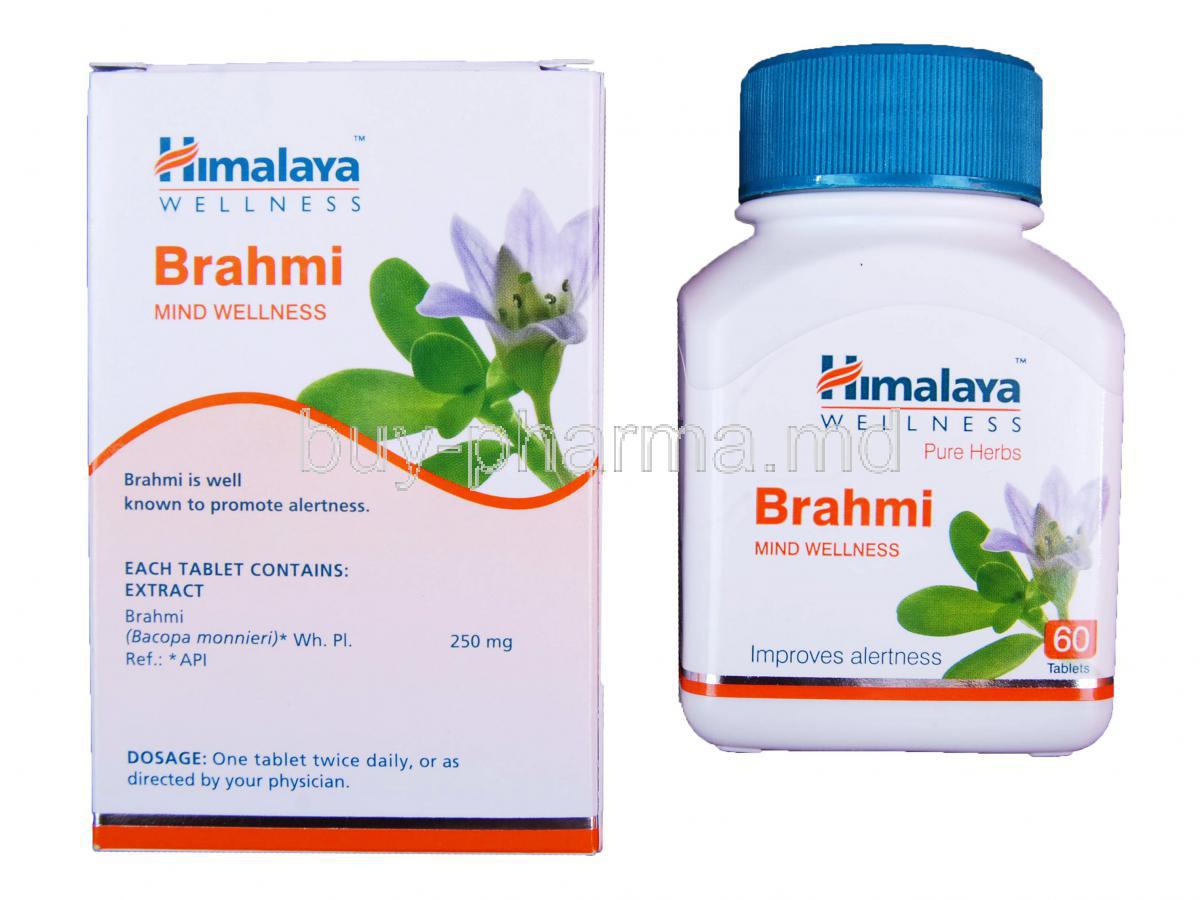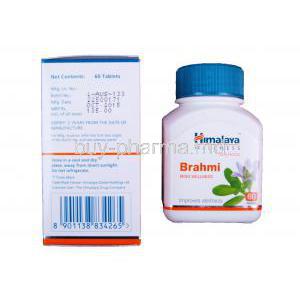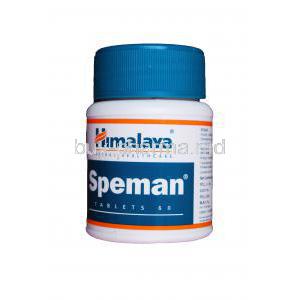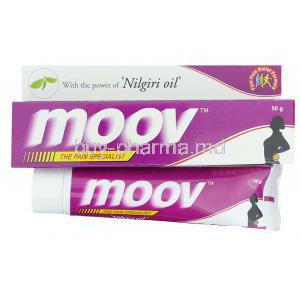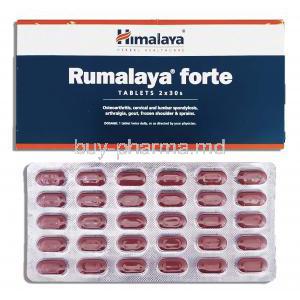Himalaya Brahmi Alertiness
- 1. Introduction to Himalaya Brahmi Alertness
- 2. Composition and Active Ingredients
- 3. Mechanism of Action: How Himalaya Brahmi Alertness Works
- 4. Benefits of Brahmi
- 5. Off-Label and Traditional Uses
- 6. Dosage and Administration Guidelines
- 7. Potential Side Effects and Safety Profile
- 8. Common Side Effects of Himalaya Brahmi Alertness
- 9. Drug and Herb Interactions
- 10. Contraindications for Use
- 11. Warnings and Important Precautions
- 12. Guidelines for Careful Administration
- 13. Use in Special Populations: Elderly, Children, Pregnancy
- 14. Overdose and Emergency Measures
- 15. Storage and Stability Instructions
- 16. Handling and Dispensing Precautions
1. Introduction to Himalaya Brahmi Alertness
1.1 Brahmi Ayurveda
Himalaya Brahmi Alertness is a plant-based nutraceutical formulated to improve cognitive function, elevate mental alertness, and support memory health. Positioned within the sphere of herbal nootropics, it leverages the cognitive-boosting properties of Bacopa monnieri, known traditionally as Brahmi in Ayurveda.
The supplement is ideal for:
- Students aiming to improve retention and focus during academic activities
- Working professionals managing mental fatigue and cognitive overload
- Older adults experiencing age-related memory decline
Its broad application makes it suitable for individuals seeking natural enhancement of brain health without synthetic stimulants.
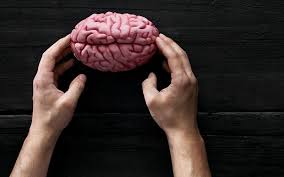
2. Composition and Active Ingredients
2.1 Primary botanical component: Bacopa monnieri (Brahmi) extract
Bacopa monneiri extract is widely recognized for its use, in medicine to boost cognitive abilities and promote relaxation of the nervous system.

2.2 Standardized bacoside concentration
Each formulation of Brahmi Alertness is standardized to a specific concentration of bacosides, the active compounds responsible for its neuro-enhancing effects, ensuring consistent potency in every dose.
2.3 Additional herbal or supportive excipients, if present
While Brahmi is the principal agent, minor herbal additives or excipients may be included to improve absorption, stability, or synergy. These are non-synthetic and comply with natural wellness standards.
2.4 Ingredient source quality and formulation purity
The raw herbs come from environments free of pesticides and undergo quality inspections before being used in the final product, which is devoid of artificial preservatives, certain heavy metals, and synthetic chemicals.
3. Mechanism of Action: How Himalaya Brahmi Alertness Works
3.1 Neuropharmacological effects of bacosides on memory and cognition
Repairing damaged neurons and encouraging nerve growth bacosides improve memory encoding and retrieval by enhancing communication.

3.2 Antioxidant and neuroprotective properties
The passage shows effects by decreasing oxidative stress in brain cells and shielding them from age-related neurodegenerative alterations.
3.3 Modulation of neurotransmitters (acetylcholine, serotonin)
Influencing acetylcholine levels is crucial for memory and focus; it also plays a role in boosting mood and mental strength by affecting serotonin levels.

3.4 Effect on mental fatigue and concentration enhancement
Brahmi helps improve blood flow to the brain and lower hormone levels, fighting tiredness and maintaining focus during mental work.
4. Benefits of Brahmi
4.1 Support for memory retention and recall
4.2 Enhancing mental clarity and alertness during stress
It aids in maintaining cognitive sharpness during periods of emotional or work-related stress.
Brahmi Alertness has been found useful in mitigating early signs of cognitive degeneration, including forgetfulness and decreased processing speed.
4.4 Adjunct in academic performance improvement
5. Off-Label and Traditional Uses
5.1 Brahmi ADHD
5.2 Use in sleep disorders due to its adaptogenic properties
5.3 Ayurvedic applications for epilepsy and anxiety management
Historically, Brahmi has been used in Ayurveda to calm the mind and stabilize neurological imbalances, including seizures.
5.4 Complementary support in mental health rehabilitation programs
It may be integrated as a non-pharmacological adjunct in cognitive behavioral therapy and neurorehabilitation settings.
6. Dosage and Administration Guidelines
6.1 Recommended adult dosage for cognitive enhancement
It is recommended to take one or two tablets per day with meals as directed by a healthcare professional.
6.2 Best time to take Brahmi
In the morning, many people find it helpful to stay alert throughout the day without disrupting their sleep by taking medication.
6.3 Duration of use and cyclic supplementation
Best results are seen with consistent use over 8-12 weeks. Cyclic usage (e.g., 3 months on, 1 month off) may be recommended to sustain efficacy.
6.4 Guidelines for dose adjustment in sensitive individuals
It is recommended that individuals showing increased sensitivity or having health conditions take a dose under the guidance of a medical professional.
7. Potential Side Effects and Safety Profile
7.1 Overview of tolerability in clinical and real-world settings
Based on trials and feedback, after the product is on the market, it seems like Himalaya Brahmi Alertness is generally well received by people of all ages.
7.2 Common mild side effects: gastrointestinal discomfort, drowsiness
7.3 Rare or serious adverse effects: bradycardia, allergic reactions
Sometimes, the supplement might decrease heart rate or trigger reactions, like a skin rash or breathing issues.

7.4 Monitoring and discontinuation parameters
Discontinue use and consult a physician if adverse effects persist or intensify. Regular monitoring may be needed in long-term users.
8. Common Side Effects of Himalaya Brahmi Alertness
8.1 Bloating or mild nausea after ingestion
Digestive upset is typically mild and transient, often resolved with food co-administration.
8.2 Dry mouth or mild headache
These symptoms are usually self-limiting and not dose-dependent.
8.3 Daytime sleepiness in some users
8.4 Mild skin rash or irritation (rare)
Skin reactions, though infrequent, should be evaluated for potential allergic response.
9. Drug and Herb Interactions
9.1 Interaction with sedatives, anxiolytics, and antidepressants
Concurrent use may potentiate the effects of CNS depressants, requiring dose recalibration.
9.2 Possible potentiation with cholinergic drugs
May enhance effects of drugs that stimulate acetylcholine activity, useful in dementia therapies.
9.3 Herbal combinations that may enhance or inhibit effect
Combining with Ginkgo biloba or Ashwagandha may increase benefits; however, St. John's Wort may interfere.
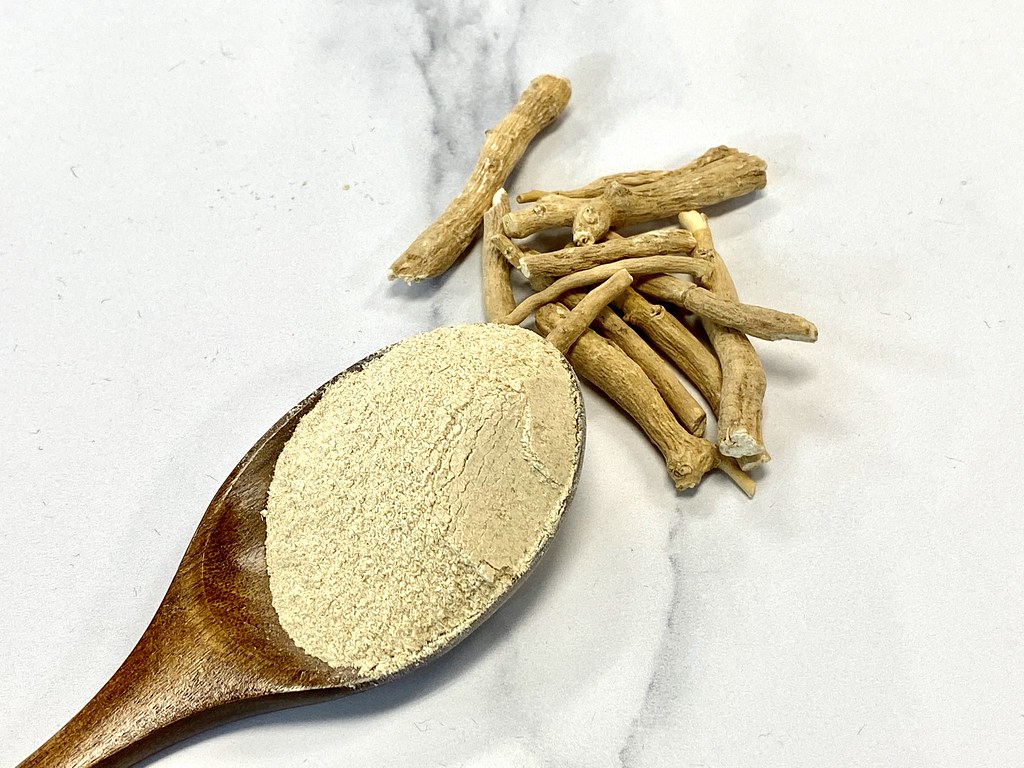
9.4 Recommendation on spacing with other cognitive supplements
A gap of 2-3 hours between different cognitive or herbal enhancers is recommended to avoid interactions.
10. Contraindications for Use
10.1 Known hypersensitivity to Bacopa monnieri or similar herbs
Individuals with known allergy to Brahmi should avoid this supplement.
10.2 Pre-existing bradycardia or cardiac conduction disorders
Due to potential slowing of heart rate, use is contraindicated in such cases without cardiological guidance.
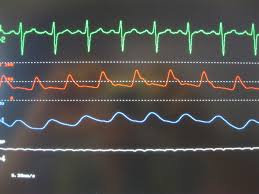
10.3 Concurrent use of strong CNS depressants
Mixing the use of sedatives or barbiturates can lead to feeling overly tired or experiencing difficulties with coordination.
10.4 Avoidance in individuals with gastrointestinal ulcers
Using Brahmi might worsen stomach sensitivity for individuals with ulcers or standing gastritis issues.
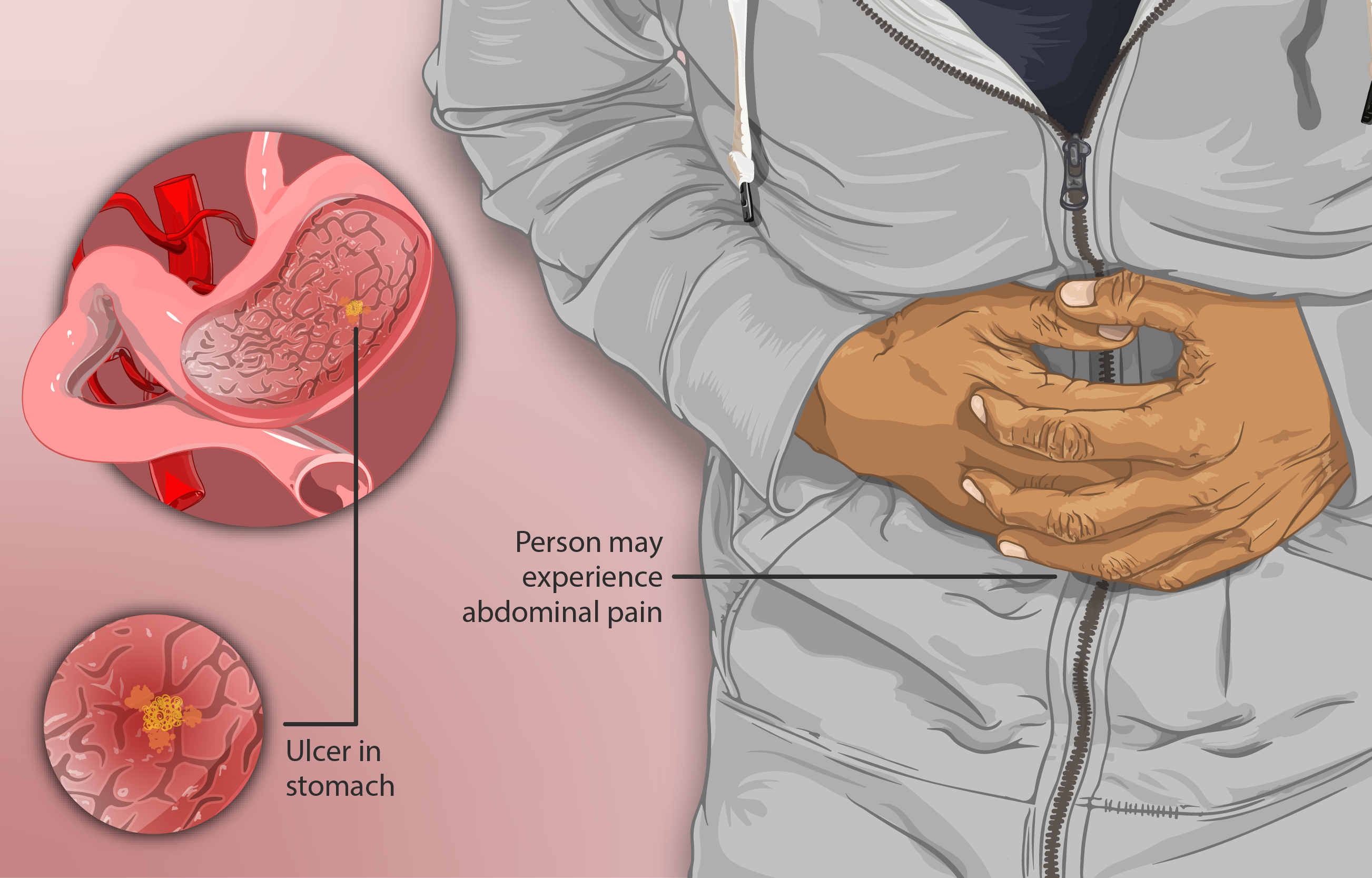
11. Warnings and Important Precautions
11.1 Risk of over-sedation with concurrent CNS-active agents
When combined with substances that depress the system, like benzodiazepines or barbiturates, along with alcohol, using Himalaya Brahmi Alertness might increase the sedative impact, leading to heightened drowsiness and reduced coordination and alertness levels.
11.2 Importance of physician consultation in psychiatric illness
Patients with pre-existing psychiatric conditions such as depression, bipolar disorder, or schizophrenia should seek medical advice before using the supplement. Brahmi may alter neurotransmitter levels, potentially affecting psychiatric stability.
11.3 Liver function monitoring in long-term use
Though herbal in origin, long-term use of Brahmi may influence hepatic enzyme activity. Periodic liver function tests are advisable for individuals on prolonged supplementation, especially those with a history of hepatic impairment.

11.4 Caution in individuals with a history of seizures
While some traditional uses suggest anticonvulsant properties, individuals with seizure disorders should use the supplement cautiously and only under medical supervision due to variable neuroactive responses.
12. Guidelines for Careful Administration
12.1 Titrating dose in individuals with hepatic or renal impairment
For those with reduced liver or kidney function, a lower initial dose is recommended. Titration should be gradual, with ongoing clinical observation to prevent accumulation and toxicity.
12.2 Adjustments for those with known metabolic sensitivities
Persons with unique metabolic profiles or enzyme polymorphisms may exhibit hypersensitivity or reduced clearance. Dosage should be individualized to avoid side effects or suboptimal outcomes.
12.3 Periodic cognitive evaluation during prolonged use
Routine cognitive assessments such as memory tests or attention tasks should be incorporated when using the supplement beyond three months to ensure sustained efficacy and monitor for plateau or regression.

12.4 Avoiding abrupt discontinuation in dependent users
Although not classically habit-forming, some users may experience rebound fatigue or anxiety after sudden cessation. A tapered discontinuation plan is preferable for long-term users.
13. Use in Special Populations: Elderly, Children, Pregnancy
13.1 Administration in elderly: dosage adjustment and monitoring
Due to age-related pharmacodynamic changes, elderly individuals may require reduced dosages. Enhanced vigilance for sedative effects, hepatic strain, and orthostatic hypotension is recommended.
13.2 Use in children: age threshold, pediatric safety profile
Himalaya Brahmi Alertness is generally not recommended for children under 12 unless directed by a pediatric specialist. Safety and dosing standards in pediatric use remain limited and should be approached conservatively.
13.3 Use in pregnant women: contraindicated or cautious use
During pregnancy, it's best to avoid using Brahmi due to the lack of safety data in studies for this specific period of gestation. It's a concern because it may stimulate the uterus, and there are uncertainties regarding exposure risks.
13.4 Considerations for nursing mothers: excretion into breastmilk
Though not conclusively studied, active compounds may transfer into breast milk. Caution is advised, and nursing mothers should consult a healthcare professional before starting the supplement.

14. Overdose and Emergency Measures
14.1 Signs and symptoms of potential overdose
Indicators of excessive intake may include:
- Profound drowsiness or lethargy
- Nausea and gastrointestinal upset
- Bradycardia (abnormally slow heart rate)
- Blurred vision or coordination issues
14.2 Recommended immediate actions and supportive care
In suspected overdose, immediate discontinuation and supportive treatment are vital. Ensure hydration, monitor vital signs, and consult a medical provider for further management.
14.3 Contacting poison control or emergency medical services
Prompt communication with local poison control centers is crucial for proper triage. In severe cases, emergency services should be contacted to address potential cardiac or neurological complications.
14.4 Long-term effects of chronic overuse
Prolonged excessive use may disrupt neurotransmitter balance, impact liver enzyme regulation, or lead to tolerance and diminished responsiveness.
15. Storage and Stability Instructions
15.1 Recommended storage temperature and humidity conditions
Store in a cool, dry place at temperatures below 30°C. Avoid exposing the product to moisture or direct sunlight, which may degrade the active constituents.
15.2 Shelf life and expiration indicators
Check the product label for expiration date. Use before the stated date to ensure potency and effectiveness, as phytochemical degradation may occur over time.
15.3 Protection from light and air exposure
Keep the supplement in its original opaque packaging. Excessive exposure to light or oxygen can reduce stability and efficacy.
15.4 Best practices for maintaining potency
Seal the container tightly after each use. Avoid transferring tablets to other containers and do not refrigerate unless specified by the manufacturer.
16. Handling and Dispensing Precautions
16.1 Keeping out of reach of children
As with all supplements, store away from children to prevent accidental ingestion, especially in households with toddlers.
16.2 Avoiding contamination during use
Do not touch tablets with wet hands. Always dispense with dry, clean hands or a scoop to maintain hygiene and integrity.
16.3 Safe disposal of expired or unused product
Dispose of through appropriate pharmaceutical waste channels. Avoid flushing or discarding in household trash where possible.
16.4 Packaging integrity and tamper evidence
Ensure the seal is intact before first use. Any signs of tampering, discoloration, or odor warrant disposal and avoidance.
Himalaya Brahmi Alertiness FAQ
- What is Himalaya Brahmi used for?
- Does brahmi have side effects?
- How long does it take for brahmi to work?
- Is Brahmi good for the brain?
- What is the purpose of Brahmi?
- Does Brahmi cause sleep?
- Does Brahmi affect blood pressure?
- Can Brahmi reduce anxiety?
- What is the advantage of Himalaya Brahmi?
- Who should not take Brahmi?
- Does Brahmi increase IQ?
- What time of day to take bacopa?
- Can you take bacopa long term?
- Does Brahmi increase memory?
- Can Brahmi be taken daily?
- Is Brahmi anti aging?
- What are the two types of Brahmi?
- Does Brahmi increase blood pressure?
- Does Brahmi actually work?
- Who should not eat Brahmi?
- Can Brahmi and turmeric be taken together?
- What is the best way to take Brahmi?
- What are the side effects of Brahmi?
- How much time does Brahmi take to work?
- Which is better Ashwagandha or Brahmi?
- Is Brahmi safe for kidney?
- What is the English name for Brahmi?
What is Himalaya Brahmi used for?
Enhances memory and mental acuity while promoting learning and clear thinking abilities. Himalaya Organic Bacopa capsules contain a scientifically researched blend of brahmi (from the Bacopa monieri plant). This holistic formula is designed to enhance alertness and memory and improve clarity of thought processes.
Does brahmi have side effects?
Stomach issues such as nausea, vomiting, diarrhea
How long does it take for brahmi to work?
2-4 weeks
Is Brahmi good for the brain?
Enhances brain chemicals that play a role in cognitive processing, such as thinking and memory functions, to boost skills.
What is the purpose of Brahmi?
Using Brahmi as a brain tonic is suitable for people of all ages and genders. Taking Brahmi supplements daily is strongly associated with brain performance.
Does Brahmi cause sleep?
Certain research indicates that Brahmi could possess calming qualities that aid in promoting sleepiness in individuals experiencing insomnia or restlessness issues, based on findings that the overall extract of the Brahmi plant might contribute to sedative and anxiety-reducing effects in animals.
Does Brahmi affect blood pressure?
Brahmi's ethanolic extract can lower blood pressure in a dose-dependent manner.
Can Brahmi reduce anxiety?
Using Brahmi can help alleviate the signs of stress and anxiety.
What is the advantage of Himalaya Brahmi?
Improved Awareness and Cognitive Clarity Boost: Himalaya Brahmi tablets are recognized for their capacity to boost awareness and cognitive clarity.
The organic components present in Brahmi have long been utilized to promote cognitive functions, which can be especially advantageous during activities that demand focus.
Who should not take Brahmi?
If you have an allergic response to bacopa or any of its ingredients, It is advisable to avoid using this medication.
Does Brahmi increase IQ?
Yes
What time of day to take bacopa?
Any time
Can you take bacopa long term?
Yes
Does Brahmi increase memory?
Yes
Can Brahmi be taken daily?
Take two capsules two times a day; with your meals and once, after your meals.
Is Brahmi anti aging?
Yes
What are the two types of Brahmi?
Pragyashakti and Subodhak
Does Brahmi increase blood pressure?
No
Does Brahmi actually work?
Studies indicate that it could enhance abilities, reduce feelings of anxiety and stress. The positive effects are thought to be attributed to a group of substances known as bacosides found in Bacopa monnieri.
Who should not eat Brahmi?
- Pregnant or breastfeeding women, children, people with thyroid disorders.
- Individuals with bradycardia or low heart rate.
- Those with gastrointestinal disorders: Brahmi can occasionally cause digestive discomfort or stomach upset in some individuals.
Can Brahmi and turmeric be taken together?
Yes
What is the best way to take Brahmi?
Its recommended to have it with a meal since it could lead to stomach discomfort if taken without eating.
What are the side effects of Brahmi?
Excessive intake of supplements could lead to stomach discomfort, such as nausea and diarrhea, as side effects.
How much time does Brahmi take to work?
2-4 weeks
Which is better Ashwagandha or Brahmi?
Ashwagandha is good for managing stress and anxiety while Brahmi is best for improving memory and focus.
Is Brahmi safe for kidney?
Yes
What is the English name for Brahmi?
Indian pennywort

